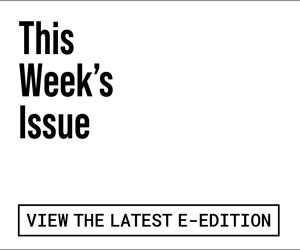 In light of the recession this holiday season, what kinds of programs in your district are doing important things to fight hunger and poverty?
In light of the recession this holiday season, what kinds of programs in your district are doing important things to fight hunger and poverty?
In the Monterey Bay area, 20 percent of the people live below the federal poverty level and the number of people who have suffered from food insecurity (having missed meals) has tripled in the past eight years. Second Harvest Food Bank is one of the most effective service organizations in the area and they have large bins in front of local stores and offices in order to collect canned food donations. Last month, Second Harvest Food Bank served free food to approximately 44,000 individuals and they receive a majority of their food donations during the holiday season.
Additionally, I have had the pleasure of meeting the volunteers at the Loaves and Fishes Soup Kitchen who feed the large number of individuals who stop by for a meal, as well as the seniors who volunteer at Grey Bears bagging food for their Brown Bag program that delivers food to other seniors. While these two programs serve different clientele, they both aid in reducing hunger within our community.
Recently, I participated in a gleaning (harvesting) in the fields of Salinas sponsored by the group Ag Against Hunger, where we picked tons of romaine lettuce that would have gone to waste. Ag Against Hunger connects local growers with food banks and feeds 75,000 low-income people each month in Santa Cruz, Monterey and San Benito Counties. If there can be a silver lining to this recession, it’s that many local residents are using their unexpected free time to volunteer to help those in even worse shape. Whether it is food, money, or time, all are welcomed by these worthy organizations.
My wife and I will join others in serving Thanksgiving dinner to homeless and low-income families. I encourage those who are able to volunteer with others who are making a difference in these tough economic times.
The house passed its version of the healthcare package. Now that it goes to the US Senate, what are the implications for health reform in California?
The national healthcare reform package that recently passed the House of Representatives continues to be a “work in progress” as the U.S. Senate debates additional critical issues and proposed amendments. Among the issues of greatest concern to the states and to me as a state legislator, is whether states will have the option to pass legislation that may provide a higher level of protection or coverage than the national healthcare reform package.
The issue of “federal pre-emption” is at the center of debate in Congress and will determine how California and other states may proceed with state-based reform measures in the future. As a co-author of Senate Bill 810, a measure that would establish a single payer health care system in California, I remain committed to support of a universal and comprehensive healthcare program that will prioritize funding of preventive healthcare protection while preserving patient choice and flexibility.
The legislature passed a large water package recently. What will its impact be here on the Central Coast?
The water package passed by the California Legislature involves a number of water policy bills addressing conservation, groundwater monitoring, Delta governance, Delta conservation, and an $11 billion water bond measure that requires a majority vote of California voters in November 2010 to become law.
Much of the water package focuses on California’s northern, Delta, central, and southern regions. The bond measure would extend the cost of the infrastructure for water storage, Delta restoration, and specific water projects to all California taxpayers. I did not support the bond measure because I had concerns about the need for a “beneficiary pays” system of water management and the debt burden on the general fund. I also believe that the Delta recovery and restoration plans failed to include sufficient Delta representation in composition and implementation.
As most readers are aware, the Central Coast region of California is dependent on our own water system of aquifers supported by riparian arteries including the San Lorenzo, Soquel, Pajaro, Salinas, Carmel, and Big Sur rivers. Throughout our region, we face the challenge of overdrafting. We need to maximize and promote integrated conservation, reuse and recycling, and alternative water systems, including desalination where appropriate, cost-effective, and environmentally sound. We need to look at water use and management as a regional issue, while working to engage all water users in a fundamentally new manner of thinking to protect one of our most precious and life-sustaining resources.












